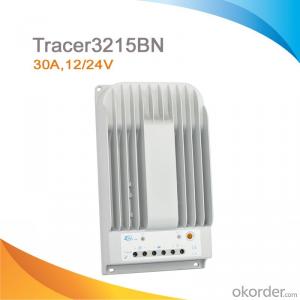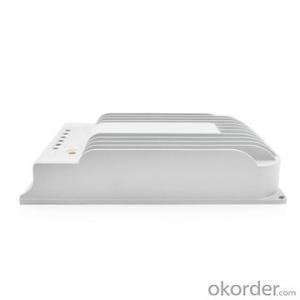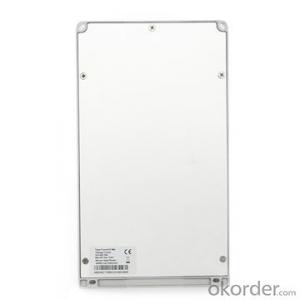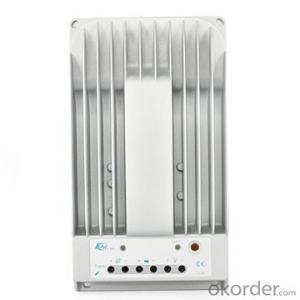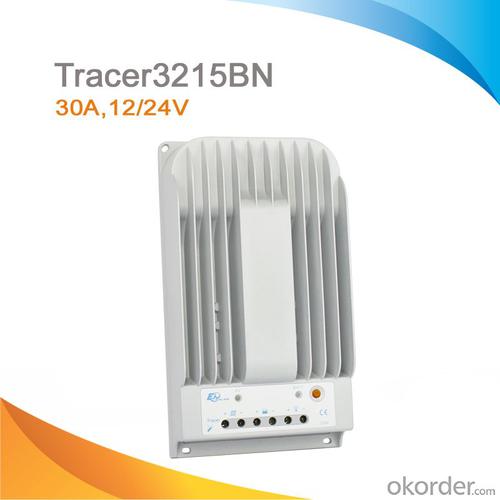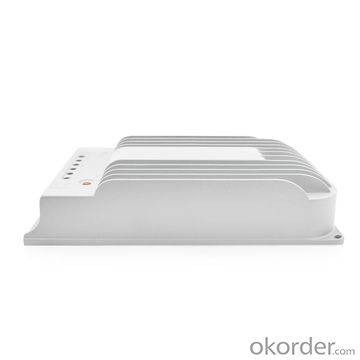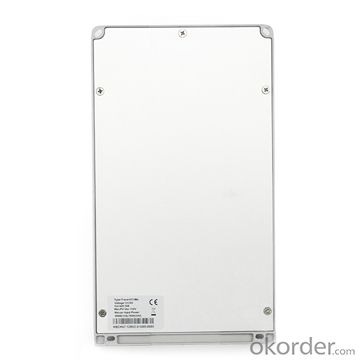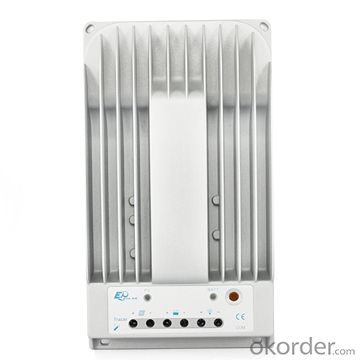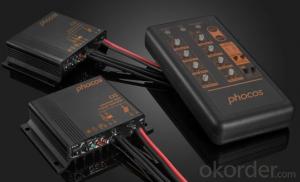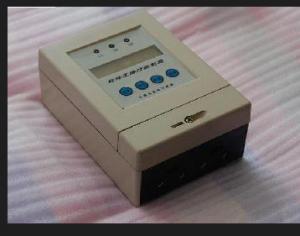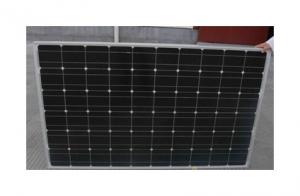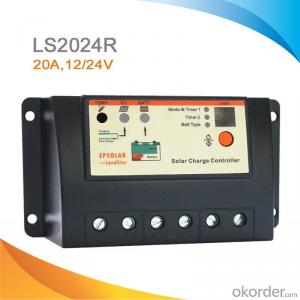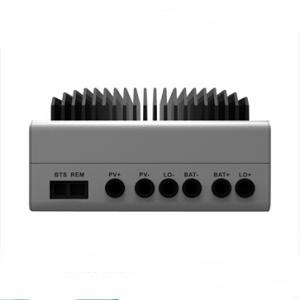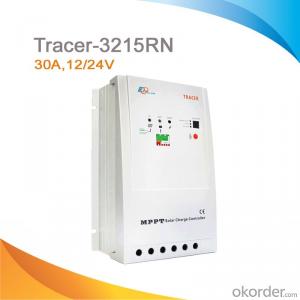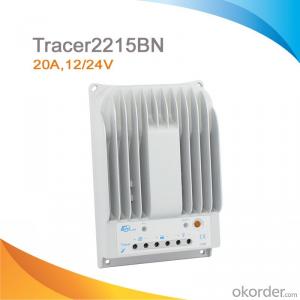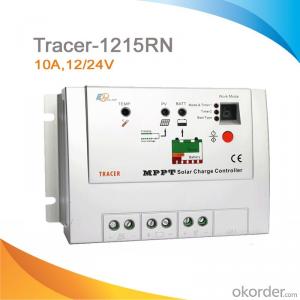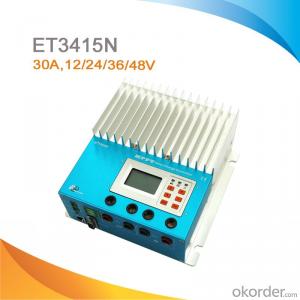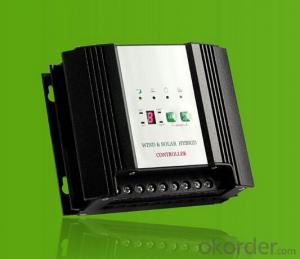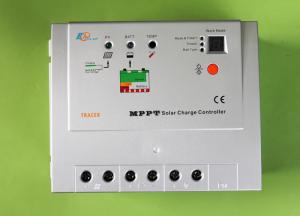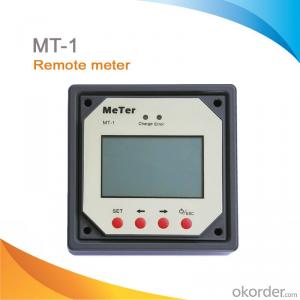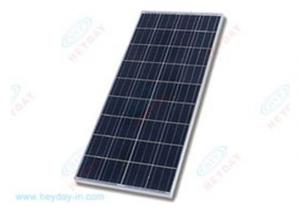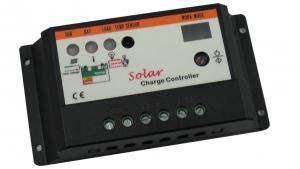Y Solar Charge Controllers MPPT Solar Charge Controller 30A, 12/24V, Tracer3215BN
OKorder Service Pledge
OKorder Financial Service
You Might Also Like
Descriptions:
A charge controller, or charge regulator is basically a voltage and/or current regulator to keep batteries from overcharging. It regulates the voltage and current coming from the solar panels going to the battery. Most "12 volt" panels put out about 16 to 20 volts, so if there is no regulation the batteries will be damaged from overcharging. Most batteries need around 14 to 14.5 volts to get fully charged.
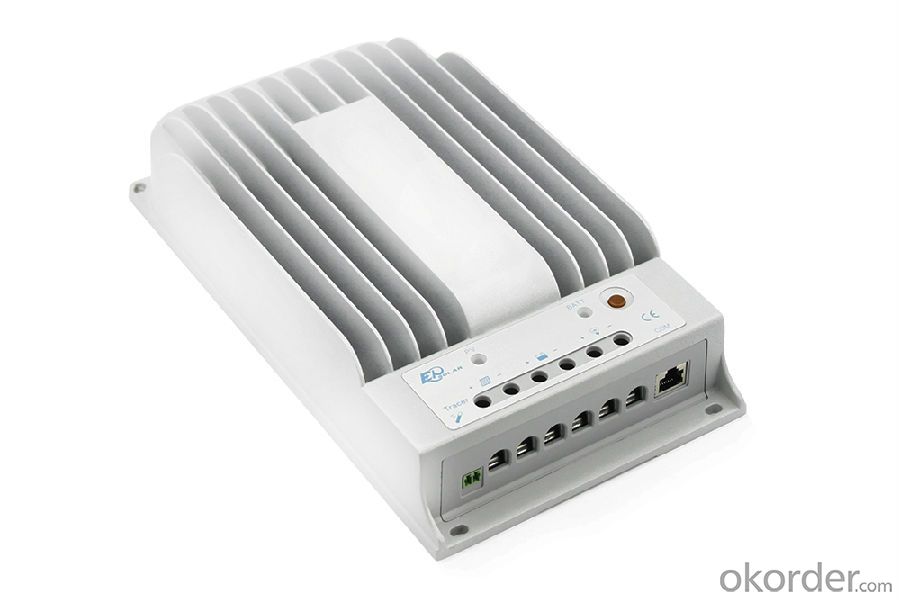
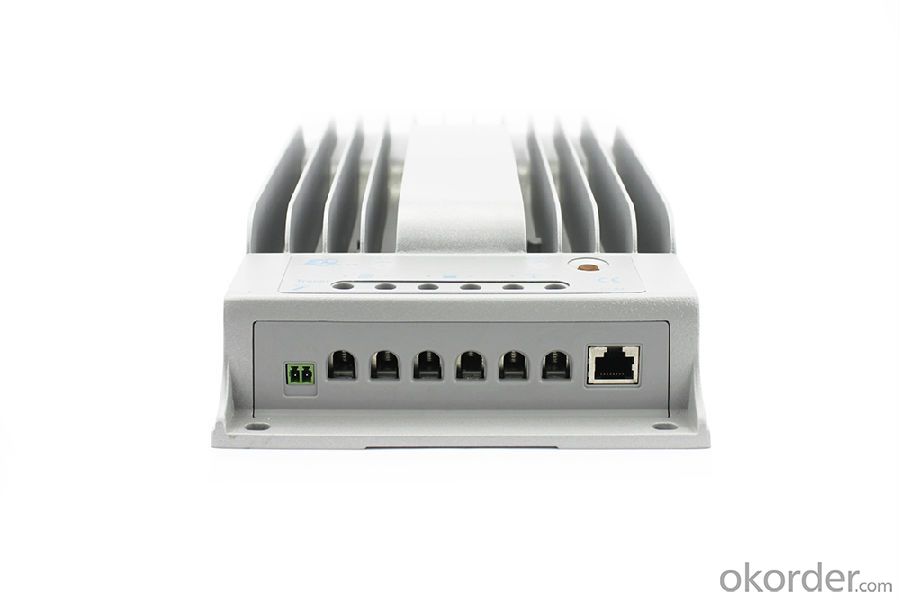
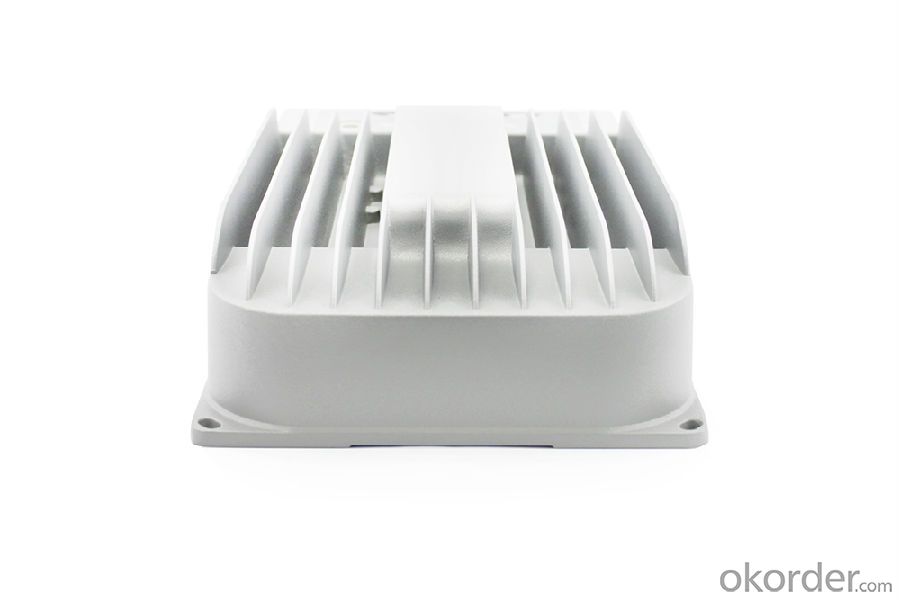
Specifications
10a,20a,30a,40a,12/24v auto work
Die-cast aluminum design
RS485 ports with MODBUS communication
option monitoring software
Features:
·Innovative MPPT technology
·Peak conversion efficiency of 98%
·High tracking efficiency up to 99%
·Several seconds tracking speed
·Die-cast aluminum design and nature cooling
·Temperature compensation
·Diversified load control to meet different requirements
·Four battery type options: Sealed, Gel, Flooded, and USER
·Intelligent lighting and timer control for solar lighting system
·Energy statistics function
·RS485 ports with MODBUS communication protocol
·Optional PC monitoring software and remote meter for real-time monitoring and battery management parameter setting
·Field upgradable firmware
Electronic Protections:
·PV short circuit protection
·PV overvoltage alarm protection
·PV current limiting protection
·PV reverse polarity protection
·Battery overcharge protection
·Battery over discharge protection
·Battery reverse polarity protection
·Load overload protection
·Load short circuit protection
·Overheating protection
Model | Tracer3215BN |
Nominal system voltage | 12/24V auto work |
Rated battery current | 30A |
Rated load current | 20A |
Max. PV open circuit voltage | 150V |
Max. battery voltage | 32V |
Max. PV input power | 390W (12V) |
780W (24V) | |
Equalize charging voltage | Sealed: 14.6V, Flooded: 14.8V, USER: 9~17V |
Boost charging voltage | Gel: 14.2V, Sealed: 14.4V, Flooded: 14.6V, USER: 9~17V |
Float charging voltage | Gel /Sealed /Flooded: 13.8V, USER: 9~17V |
Low voltage reconnect voltage | Gel /Sealed /Flooded: 12.6V, USER: 9~17V |
Low voltage disconnect voltage | Gel /Sealed /Flooded: 11.1V, USER: 9~17V |
Self-consumption | ≤50mA(12V) ≤27mA(24V) |
Grounding | Common negative |
Temp. compensation | -3mV/℃/2V |
Communication Port | RS485 / RJ45 interface |
Working temperature | -35℃~+55℃ |
Storage temperature | -35℃~+80℃ |
Humidity | ≤95% N.C. |
Enclosure | IP30 |
Overall dimension | 281x160x60mm |
Terminal | 16mm2 |
Net weight | 2.3kg |
- Q: Can a solar controller be used with a solar-powered remote sensing system?
- Yes, a solar controller can be used with a solar-powered remote sensing system. A solar controller is responsible for regulating the power output from solar panels and managing the battery charging process. In a solar-powered remote sensing system, the solar controller will ensure that the solar panels efficiently charge the batteries that power the remote sensing equipment. This helps maintain a reliable and continuous power supply for the remote sensing system, making it an essential component for its operation.
- Q: Can a solar controller prevent overcharging of batteries?
- Preventing overcharging of batteries is one of the key functions of a solar controller. Also referred to as a charge controller or regulator, it plays a vital role in a solar power system by regulating the voltage and current that flows from the solar panels to the batteries. Its primary purpose is to protect the batteries from overcharging, as this can result in reduced battery life and potential damage. The solar controller constantly monitors the voltage and state of charge of the batteries, making adjustments to the charging current as necessary. When the batteries reach full charge, the solar controller prevents any further charging by redirecting the excess energy generated by the solar panels. Typically, this is achieved by either reducing the charging current or disconnecting the panels from the batteries. In addition to its basic functions, some advanced solar controllers offer additional features such as temperature compensation and equalization charging. Temperature compensation ensures optimal battery performance and longevity by adjusting the charging voltage based on the battery temperature, preventing overcharging or undercharging in different environmental conditions. On the other hand, equalization charging is a controlled overcharging process that is performed periodically to balance the battery cells and eliminate sulfation, ultimately enhancing battery performance. In summary, a solar controller is an indispensable component in a solar power system that safeguards the batteries against overcharging. Its presence ensures the longevity and optimal performance of the batteries, making it an essential aspect of any solar setup.
- Q: Can a solar controller be used with a portable solar panel?
- Yes, a solar controller can be used with a portable solar panel. A solar controller helps regulate and optimize the charging process of a solar panel, ensuring the battery is charged efficiently and preventing overcharging. Whether it is a portable or fixed solar panel, using a solar controller can extend the lifespan of the battery and protect the system from damage.
- Q: How does a solar controller handle short-circuit conditions?
- To ensure optimal performance and safety, a solar controller is specially designed to regulate and control the charging process of solar panels. In the case of short-circuit situations, the solar controller employs a range of mechanisms to effectively handle them. Primarily, short-circuit protection features are typically integrated into a solar controller. These features are commonly in the form of internal fuses or circuit breakers, which are designed to trip or open the circuit if a short circuit occurs. By doing so, these features prevent excessive current flow that could potentially harm the solar panels or other connected components. Moreover, the solar controller may also incorporate overcurrent protection mechanisms. These mechanisms constantly monitor the current flowing through the system and automatically decrease or cut off the current when it surpasses a predetermined threshold. This prevents any damage to the solar panels or other components during a short-circuit event. In addition, some advanced solar controllers utilize microprocessors or microcontrollers to continuously monitor and analyze the system's conditions. These microprocessors are programmed to detect short-circuit conditions by closely observing voltage and current levels. In the event of a short circuit, the microprocessor can promptly respond by either shutting down the charging process or activating the short-circuit protection mechanisms. In conclusion, a solar controller is equipped with a variety of protective measures to effectively handle short-circuit situations. These measures include short-circuit protection features, such as fuses or circuit breakers, as well as overcurrent protection mechanisms and advanced monitoring systems. By employing these mechanisms, the solar controller ensures the safety and longevity of the solar panels and the entire solar power system.
- Q: What brand of solar controller is good
- Professional to do solar energy, such as imperial Ming, Sang Le, sun rain, force Norit and so on
- Q: What is the maximum temperature range for a solar controller?
- The maximum temperature range for a solar controller typically varies depending on the specific model and manufacturer. However, in general, solar controllers can withstand temperature ranges from -40°C to +85°C (-40°F to +185°F).
- Q: Does a solar controller have a built-in light sensor?
- Indeed, a solar controller generally incorporates a light sensor within its design. Its primary function is to gauge the strength of sunlight or surrounding light, enabling the solar controller to adapt the charging settings accordingly. This is crucial in order to enhance the charging procedure and safeguard the connected battery from excessive charging or insufficient charging within the solar system. By utilizing the light sensor, the solar controller is able to identify the amount of sunlight accessible and modify the charging current and voltage levels accordingly, thus guaranteeing an effective and secure charging process for the battery.
- Q: Solar controller water level display is not correct how to do
- Re-adjust the water level to control, choose their own water.
- Q: Can a solar controller be used with a solar-powered wastewater treatment plant?
- Yes, a solar controller can be used with a solar-powered wastewater treatment plant. A solar controller helps regulate and optimize the charging and discharging of batteries in solar systems, ensuring the efficient use of solar energy. In a solar-powered wastewater treatment plant, the solar controller can be used to manage the power supply to various components, such as pumps, aerators, and sensors, allowing for effective operation and monitoring of the treatment process.
- Q: Can a solar controller be used with solar-powered indoor agricultural facilities?
- Solar-powered indoor agricultural facilities can utilize a solar controller to regulate the charging and discharging of their solar batteries. This device plays a crucial role in ensuring optimal battery performance and extending their lifespan. In these facilities, solar panels are responsible for generating electricity to power various systems such as lighting, heating, and ventilation. Therefore, having a solar controller becomes essential for effectively managing the power supply. Its main functions include maintaining a stable voltage, preventing battery overcharging or over-discharging, and efficiently utilizing solar energy. By incorporating a solar controller, indoor agricultural facilities can harness the maximum potential of renewable energy, resulting in reduced electricity costs and the promotion of sustainable farming practices.
Send your message to us
Y Solar Charge Controllers MPPT Solar Charge Controller 30A, 12/24V, Tracer3215BN
OKorder Service Pledge
OKorder Financial Service
Similar products
Hot products
Hot Searches
Related keywords
